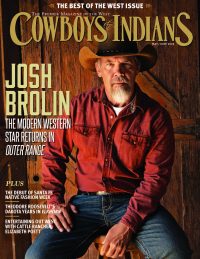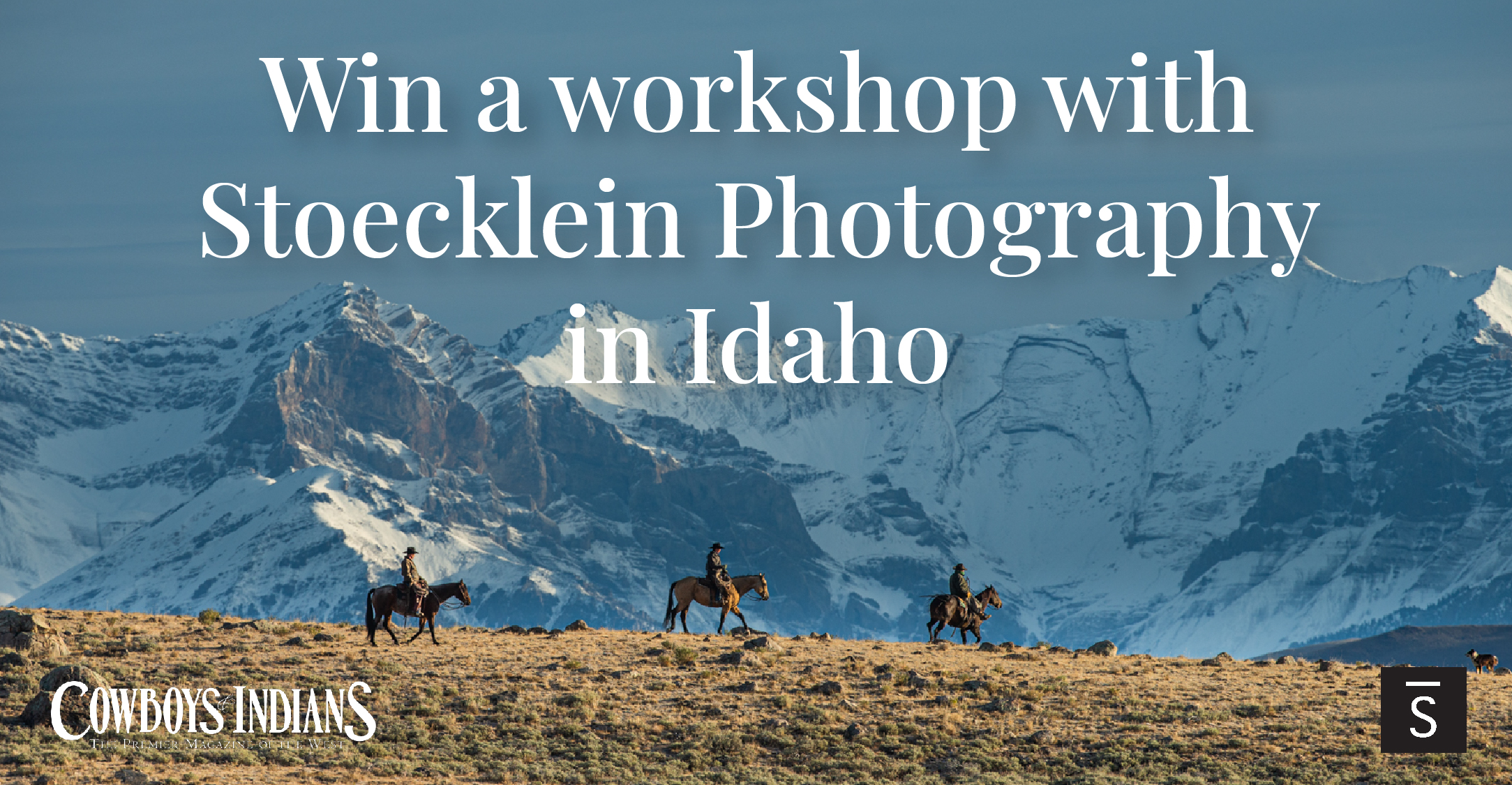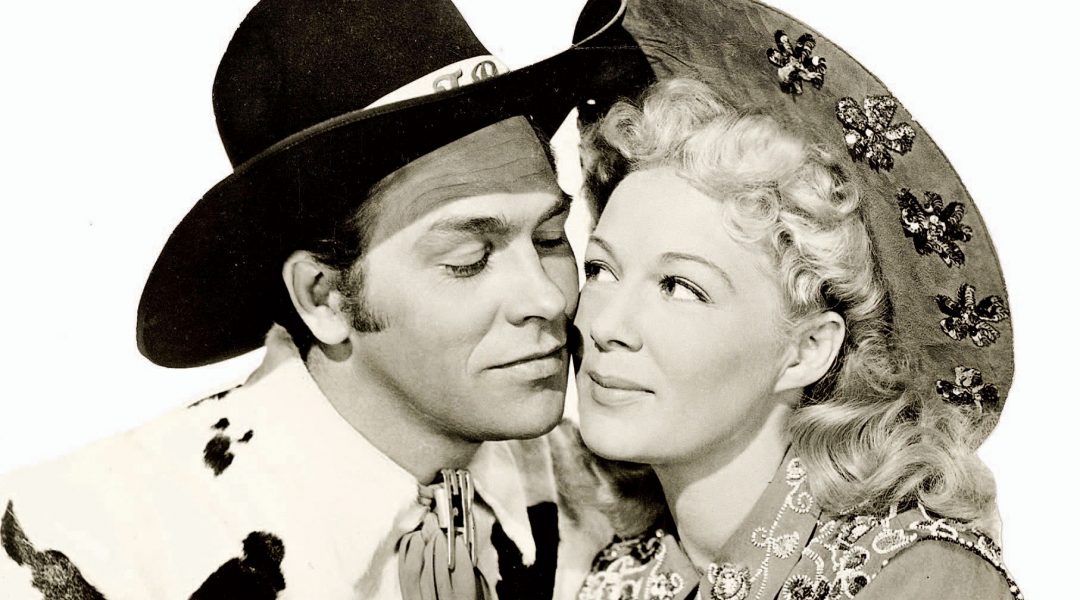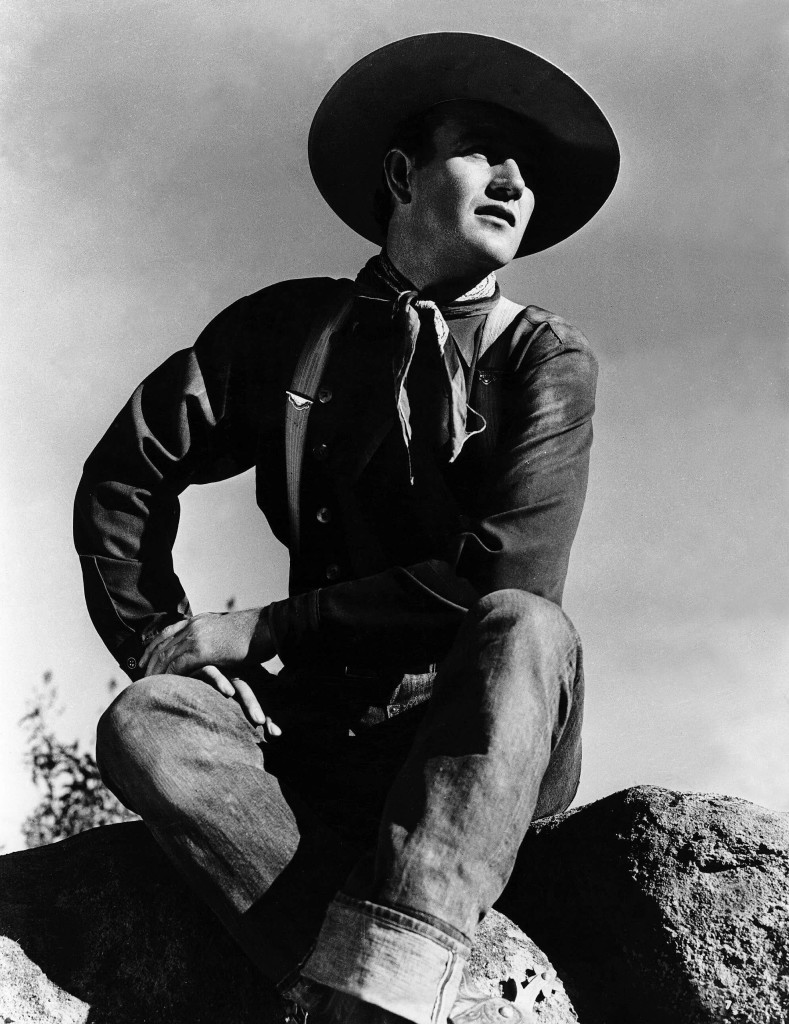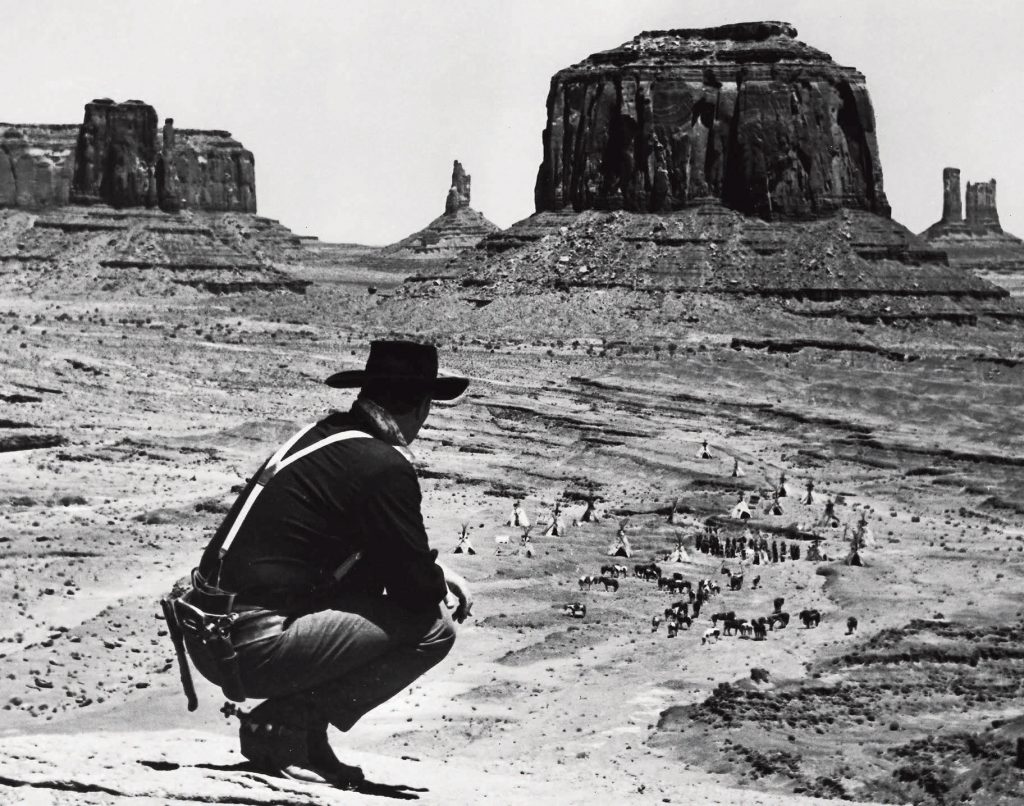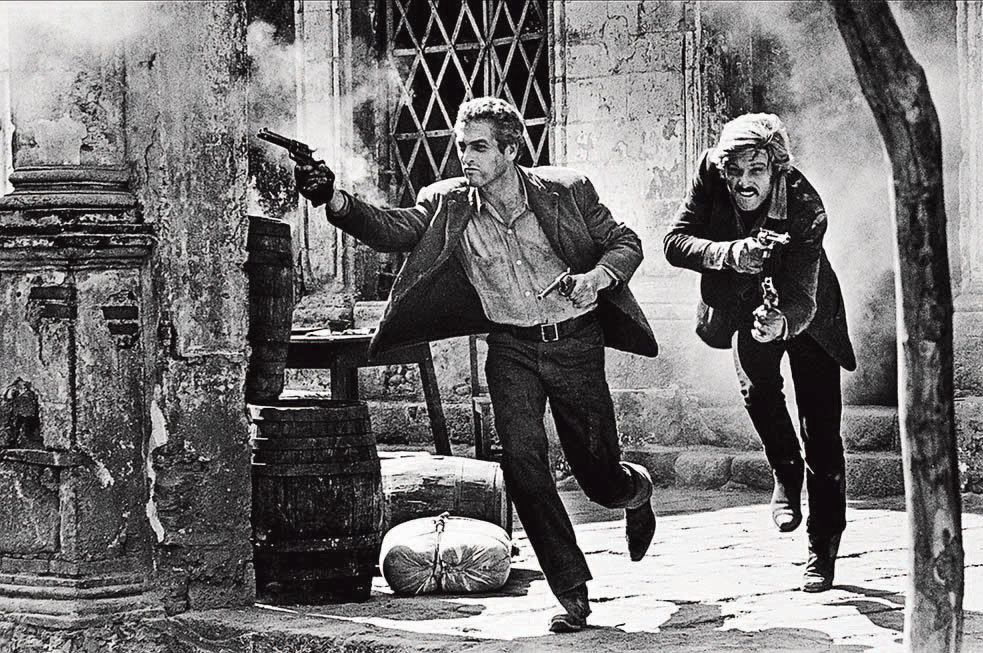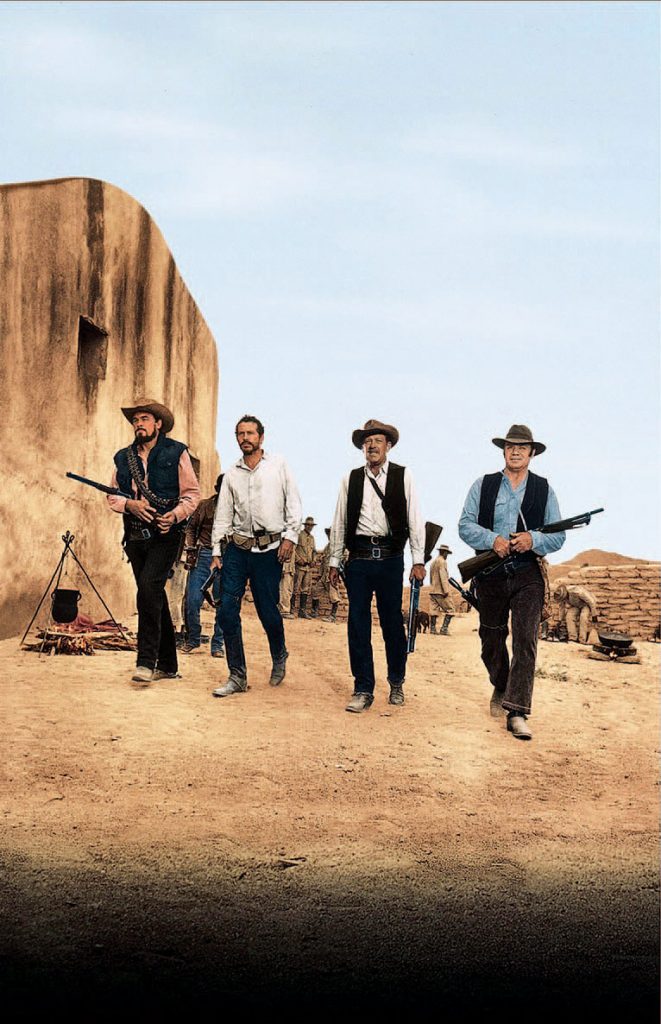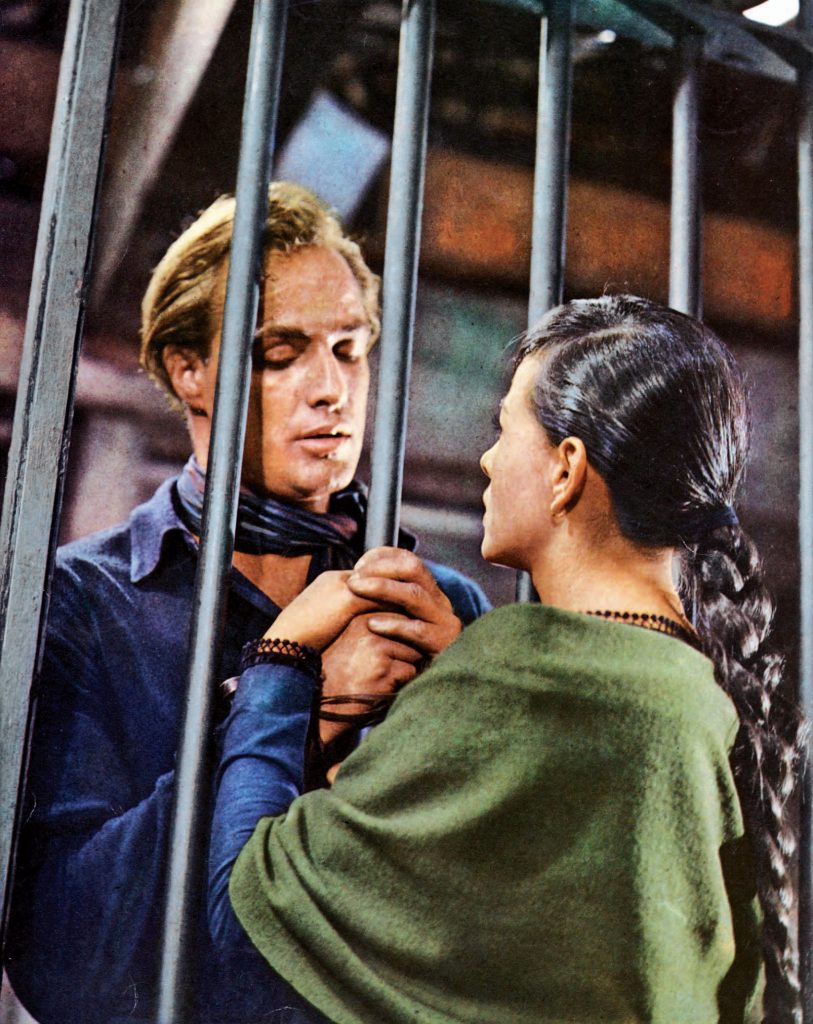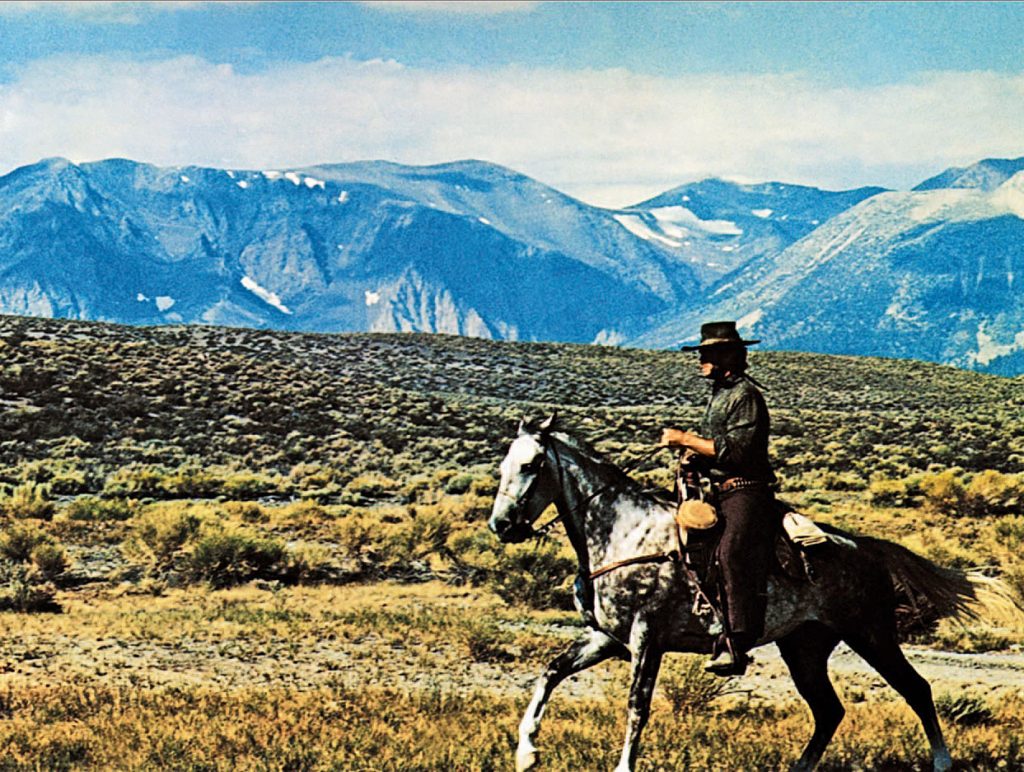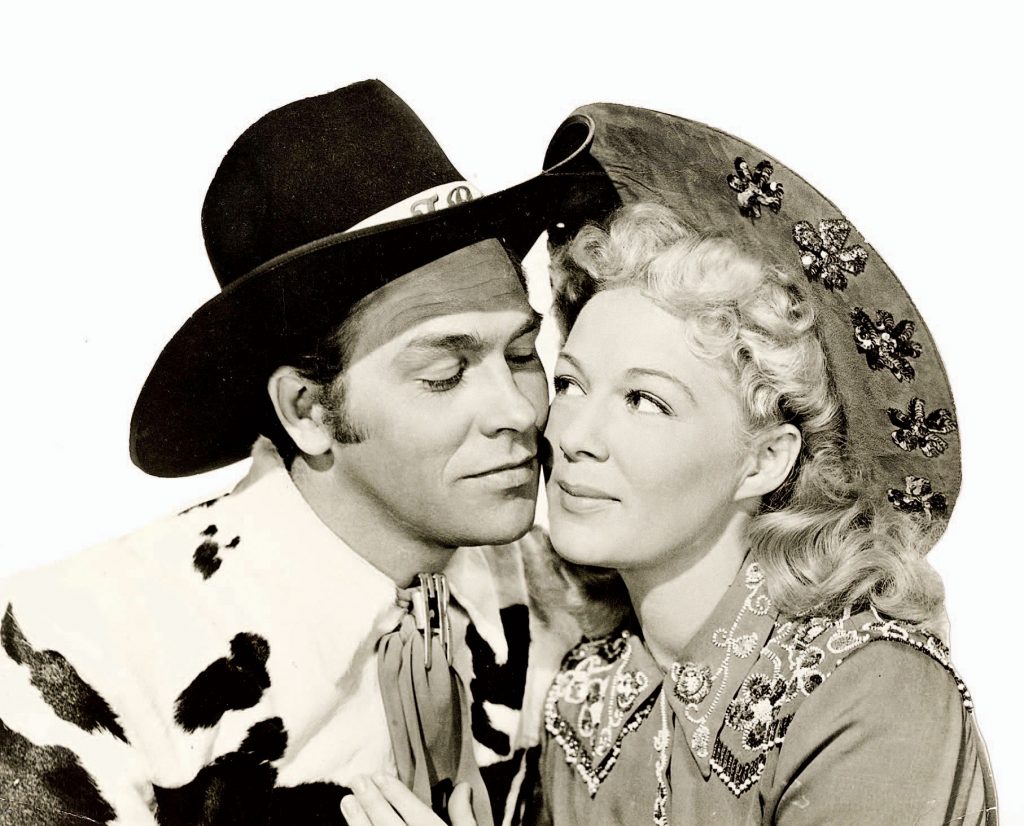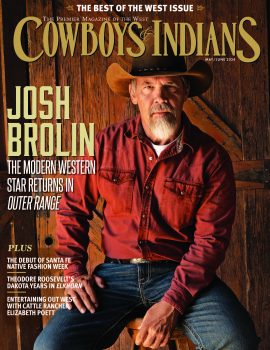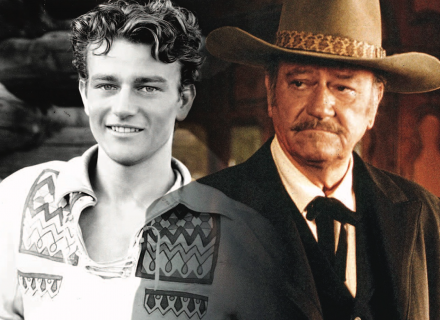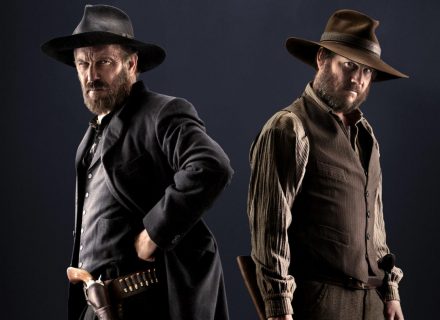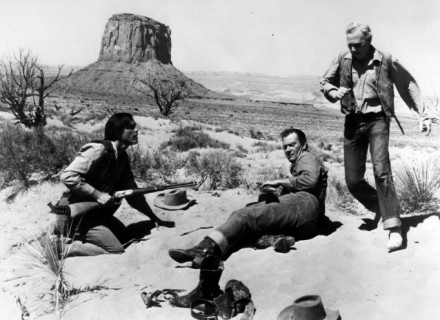At long last, we update our definitive ranking of the greatest the genre has to offer.
Under normal circumstances, the C&I crew adheres to a time-tested adage: If it ain’t broke, don’t fix it. In the case of our “100 Best Westerns Ever Made” list, however, we figured it was way past time for an update.
For one thing, the original list first appeared almost 20 years ago — in January 2002, to be precise — and since then, more than a few list-worthy films have been released. Also: We have decided — reluctantly, we admit — to heed many requests that we restrict this list to theatrical features, and provide another rundown for television series, made-for-TV movies, and miniseries (including Lonesome Dove) in a future issue.
Finally: During the pandemic lockdown, we have had time to rewatch and reevaluate scads of classic westerns. As a result, more than a few titles have moved higher on the list — and others are appearing for the first time.
What follows is a roundup based on surveys of C&I staffers and readers, film critics, and actors and filmmakers who have a special affinity for the western genre. And don’t worry: We won’t wait another two decades for an update.
- Stagecoach 1939
The disreputable doctor who cracks wise and drinks heavily, but sobers up when the chips are down. The golden-haired shady lady who brightens incandescently when a naive cowpoke calls her “a lady.” The shifty-eyed gambler with a gun at his side and, presumably, an ace up his sleeve. And, of course: The square-jawed, slow-talking gunfighter who’s willing to hang up his shootin’ irons — who’s even agreeable to mending his ways and settling down on a small farm with a good woman — but not before he settles some unfinished business with the varmints who terminated his loved ones. Why? Because, as the gunfighter tersely notes, “There are some things a man can’t run away from.”
These and other familiar figures had already established themselves as archetypes by 1939, that magical movie year in which Stagecoach premiered. Even so, director John Ford’s must-see masterwork arguably is the first significant western of the talking-pictures era, the paradigm that cast the mold, set the rules, and firmly established the dramatis personae for all later movies of its kind. Indeed, it single-handedly revived the genre after a long period of box-office doldrums, elevating the western to a new level of critical and popular acceptance. And, not incidentally, it made John Wayne a full-fledged movie star.
Photography: Copyright (C) 1939 Shutterstock
- The Searchers 1956
John Wayne gives one of his finest and most complex performances in John Ford’s enduringly popular and influential western as Ethan Edwards, a former Confederate soldier who’s obsessively driven to recover his beloved niece after her family is killed and she is abducted by marauding Comanches. For years, he continues his search, accompanied by Marty (Jeffrey Hunter), a “half-breed” orphan raised to adulthood by Ethan’s brother. And as they continue, however, Marty comes to question Ethan’s fanaticism, and the movie itself offers a darkly powerful counterpoint to the reassuring clichés of standard-issue horse operas. Even after six decades, Ford’s film seems fresh and vital as it undermines audience assumptions about what to expect from westerns in general and “a John Wayne movie” in particular.
Photography: Picturelux/The Hollywood Archive/Alamy Stock Photo
- Shane 1953
If you define a classic film as one that most people automatically assume they’ve seen, even if they haven’t, because so many other movies have reprised its basic plot, then director George Stevens’ Shane certainly qualifies for that label. Alan Ladd stars to perfection as Shane, a mysterious gunfighter who providentially appears in a Wyoming community just when the clash between homesteaders and cattle ranchers is turning uglier and bloodier. Truth to tell, Shane would like to put away his guns, and put down some roots with a farming family. But a seriously mean galoot named Jack Wilson (Jack Palance in a career-defining performance) forces him to do, however reluctantly, what he’s got to do.
- My Darling Clementine 1946
With all due respect to admirers of Tombstone and Gunfight at the O.K. Corral — both worthy films that appear later on this list — John Ford’s unforgettable drama remains in a class by itself as a cinematic account of the legendary shootout involving Wyatt Earp (Henry Fonda), Doc Holliday (Victor Mature), and the Clanton clan (led by a startlingly vicious Walter Brennan). As critic Roger Ebert noted, “My Darling Clementine must be one of the sweetest and most good-hearted of all westerns. The giveaway is the title, which is not about Wyatt or Doc or the gunfight, but about Clementine [played by Cathy Downs], certainly the most important thing to happen to Marshal Earp during the story.”
- The Magnificent Seven 1960
Another sign of a classic: Whenever it pops up during a channel surf, you can’t turn it off. In this case whether it’s near the beginning, when Yul Brynner recruits his titular team of mercenaries, or when the seven ride into the Mexican village they’re hired to protect, to the pulse-quickening “Bomp-BUMP-Bump-Bomp” of Elmer Bernstein’s score, or at the film’s climax during the crackerjack shootout with the vicious raiders led by the demonic Calvera (Eli Wallach), you simply must keep watching. Whereas the previous four films on this list are justly lauded as cinematic art, The Magnificent Seven has no pretentions other than to being the ultimate cowboy popcorn movie.
- High Noon 1952
No classic western divides movie fans more than High Noon. Carl Foreman, a blacklisted screenwriter, based the film on personal experience, hence the cold shoulder Marshal Will Kane receives when he asks his community for help. John Wayne and Howard Hawks were outraged that Kane would try to recruit amateurs into his fight and made Rio Bravo to remind moviegoers how the West was won. But the public loved High Noon, with its vulnerable hero (Gary Cooper, who won the Best Actor Oscar), lovely newcomer Grace Kelly, and haunting theme song. The film was taut and suspenseful, its story told on the faces of its characters and with the relentless ticking clock.
- Butch Cassidy and the Sundance Kid 1969
“Not that it matters, but the following story is true.” William Goldman’s “history with a twist” formula mixes fact and legend to create a high-spirited adventure. Butch and Sundance may not have been as glib or good-looking as Paul Newman and Robert Redford, but Goldman’s script stayed close to the facts as they’re known, and if Butch and Sundance didn’t really jump off that cliff to escape a posse, they should have. Redford and Newman’s potent chemistry inspired legions of attempts at imitation. The duo single-handedly gave birth to the “Buddy Film,” and the enduring influence of Butch Cassidy and the Sundance Kid can be found in movies as diverse as 48 Hours and Shanghai Noon.
Photography: AF Archive/Alamy Stock Photo
- Ride Lonesome 1959
Randolph Scott and director Budd Boetticher collaborated on seven memorable westerns between 1956 and 1960, but Ride Lonesome is considered by most aficionados to be the very best of the bunch. Scripted by Burt Kennedy, the film finds Scott perfectly cast as Ben Brigade, a bounty hunter who’s determined to transport a captured outlaw (James Best) across Indian territory. Two semi-reformed bandits (a pre-Bonanza Pernell Roberts and a callow James Coburn) want to wrest control of Brigade’s captive in order to claim an amnesty offered for their own past crimes. But Brigade isn’t interested in amnesty, or even a reward. Rather, he wants to lure the outlaw’s older brother (Lee Van Cleef) into a forced feeding of just desserts.
- Dances With Wolves 1990
We knew, we always knew, even while cheering for the cavalry in countless films, that history is written by the winners of the world’s conflicts, and America’s Native population got a raw deal. With Dances With Wolves, we saw the other side of the tale, and how fitting that it was through the eyes of an American soldier. Dances With Wolves became a personal crusade for Kevin Costner, who coproduced, directed, starred, and raised financing overseas after a string of Hollywood studios passed. His passion was rewarded with seven Academy Awards and an awakening of our national conscience.
- The Wild Bunch 1969
The best opening credits sequence ever ends with William Holden growling, “If they move ... kill ’em!” followed by the sepia-toned freeze-frame “Directed by Sam Peckinpah.” Kinda says it all. The director’s original 144-minute cut was trimmed almost immediately after the film’s release, but it’s been restored for the video and DVD release. The new scenes deepen the connection between Pike (Holden) and former Bunch member Thornton (Robert Ryan), now a bounty hunter on Holden’s trail, and after 30 years we finally discover how Pike got that limp.
Photography: Allstar Picture Library Ltd./Alamy Stock Photo
- The Outlaw Josey Wales 1976
It was the movie Clint Eastwood had to make, before the impassive persona he created through the Sergio Leone films and his other signature character, Dirty Harry, became a typecasting trap. In his 1976 book The Filming of the West, movie historian Jon Tuska predicted that Eastwood’s career likely didn’t have staying power. That same year, The Outlaw Josey Wales introduced a new type of Eastwood character, still quiet, still deadly, but also compassionate and emotionally vulnerable. The title describes how society will judge Josey Wales — an outlaw only by circumstance — but when his quest is complete, he returns to being the farmer Josey Wales in a scene that offers hope for the future.
- Destry Rides Again 1939
Has there ever been a more unlikely romantic pairing than Jimmy Stewart’s laid-back, milk-drinking lawman Tom Destry and Marlene Dietrich as the bawdy singer with a German accent and the inexplicable name of Frenchy? Destry Rides Again packs memorable songs (Dietrich’s “See What the Boys in the Back Room Will Have”) and memorable scenes (a ferocious catfight between Dietrich and Una Merkel) into 94 flawless minutes. The movie would have been longer if certain lines had made it past the censors, such as when Dietrich wins a poker hand and drops the coins down her blouse, prompting a cowboy to quip, “There’s gold in them thar hills.”
- Rio Bravo 1959
Knowing Rio Bravo’s connection to High Noon affords insight into an interesting slice of Hollywood history, but it’s hardly a prerequisite to enjoy its rousing mix of action, comedy, romance, and music. Dean Martin and Angie Dickinson join old hands John Wayne and Walter Brennan, and if the casting of Ricky Nelson was a blatant attempt by Howard Hawks to boost the box office with teenage girls, at least the kid contributed a fine duet with Martin on the ballad “My Rifle, My Pony and Me.” And look on the bright side; it could have been Fabian.
- The Gunfighter 1950
“The fastest man with a gun who ever lived ... was a long, lean Texan named Ringo.” We’ve seen gunfighters as heroes and villains, lawmen and mercenaries. But Jimmie Ringo (Gregory Peck) is the gunfighter as celebrity; trapped by fame, a subject of gossip, scorn, and adulation, Ringo can’t order a drink in a bar without drawing attention. “He don’t look so tough to me,” sneers any number of envious punks. Famous last words.
- Red River 1948
Red River appeals to those moviegoers who don’t like westerns, but inevitably discover that, yes, John Wayne can act and, yes, movies about cowboys and cattle drives can be about more than cowboys and cattle drives. Allusions to Mutiny on the Bounty infuse the father-son conflict between Wayne and Montgomery Clift, and their climactic fistfight symbolizes their genuine “old Hollywood vs. young Hollywood” rivalry. The happy ending divided audiences, but the director, Howard Hawks, liked both characters too much to let either perish, and it’s hard to fault his decision.
- The Good, the Bad, and the Ugly 1967
Recent scholarship has favored Once Upon a Time in the West as Sergio Leone’s crowning work, but for those who can’t separate the Leone oeuvre from its most famous character, The Good, the Bad, and the Ugly is the ultimate spaghetti western. It has all the signature elements: dusty, desolate vistas; amoral characters such as Tuco (Eli Wallach) who are motivated only by profit; a showdown in a circular arena, suggesting gladiators in a colosseum; an incomparable score whose whistling theme, by Ennio Morricone, is instantly recognizable; and Clint Eastwood as the serape-clad, cheroot-chomping Man with No Name.
- The Man Who Shot Liberty Valance 1962
Rance Stoddard (James Stewart) plays a pitifully meek attorney incapable of killing sadistic outlaw Liberty Valance. But that’s what history has recorded because “when the legend becomes fact, print the legend.” Lee Marvin gives us a wonderful villain for the ages, and John Wayne impersonators picked up a staple for their act in the Duke’s demeaning references to
Stewart’s character as “Pilgrim.”
- Once Upon a Time in the West 1969
Henry Fonda never struck us as the bad-ass type, but in Sergio Leone’s operatic follow-up to his Dollars trilogy, Fonda plays one of the most abhorrent hired guns ever. It’s disturbing, like watching Mister Rogers give a kid a wedgie. Forty minutes of cuts killed the original American release, but the film was finally restored to its full grandeur in 1984.
- She Wore a Yellow Ribbon 1949
“So here they are, the dog-faced soldiers, the regulars, the 50-cents-a-day professionals, riding the outposts of the nation.” The middle entry in John Ford’s Cavalry trilogy had his stock company at their most sentimental and featured Oscar-winning photography of Monument Valley in Technicolor. The Duke, whose inherent air of authority worked to his favor when he played older characters, found one of his most indelible roles as retiring officer Nathan Brittles.
- The Hired Hand 1971
Two years after the smash success of Easy Rider, Peter Fonda used his newly developed muscle to direct and star in this unconventional western, by turns lyrical and brutal, about two saddle tramps (Fonda and the great Warren Oates) whose friendship is tested when one attempts a reconciliation with the wife (Verna Bloom) he abandoned years earlier.
- Unforgiven 1992
In order to bring life to this project, Clint Eastwood traded on his status as the genre’s last bankable star to get a western made in a youth-driven market, then crafted a darkly poetic character study that found more to condemn than to celebrate in our western myth.
- Open Range 2003
As grizzled cattle-drivers who ride into danger while resting their herd near a small frontier town, Kevin Costner (who also directed) and Robert Duvall are a match made in western movie lovers’ heaven.
- The Shootist 1976
Though it’s impossible to disconnect fact from fiction when E.W. Hostetler (Jimmy Stewart) tells John Bernard Books (John Wayne), “You’ve got cancer” (Wayne succumbed to the disease in 1979), no movie star essayed a better final bow.
- Tombstone 1993
Tombstone’s unpretentious, balls-out gusto reminded us that a great western didn’t have to unfold on the grand scale of Lonesome Dove or Dances With Wolves.
- True Grit 1969
The Duke finally walked off with an Oscar as the irascible Marshal Rooster Cogburn. John Wayne called Rooster’s recollections of his life to costar Kim Darby “the best scene I ever did.”
- The Virginian 1929
It had been filmed twice before Gary Cooper played the title role in the first “talking” feature-length western. It’s Cooper’s Virginian we remember, for his star-making turn and the mustache-twirling of the villainous Walter Huston.
- Winchester ’73 1950
Winchester ’73, the story of “the gun that won the West,” follows Jimmy Stewart as he traces the provenance of his stolen rifle through a series of unsavory owners, all of whom are brought down by frontier karma.
- Blazing Saddles 1974
Mel Brooks’ rude, crude masterpiece contained enough laugh-out-loud moments for 10 movies, from the infamous campfire scene to Madeline Kahn’s show-stopping send-up of Marlene Dietrich.
- Fort Apache 1948
John Ford’s Fort Apache inaugurated the landmark Cavalry trilogy with a sobering reminder that sometimes the good guys don’t win.
- Angel and the Badman 1947
Quirt Evans (John Wayne), on the vengeance trail, must choose between killing the man who murdered his father and settling down with a sweet farm girl played by Gail Russell, the hottest Quaker babe in movies.
- Pat Garrett and Billy the Kid 1973
Sam Peckinpah’s cult-fave revisionist western showcases potent performances by James Coburn and Kris Kristofferson in the title roles, an exceptionally strong supporting cast (Slim Pickens, R.G. Armstrong, etc.), and co-star Bob Dylan’s affecting song “Knockin’ On Heaven’s Door.”
- One-Eyed Jacks 1961
This film never stood a chance back in 1961, when its star and director, Marlon Brando, spent three years fussing over every camera angle and line reading. Today, the back story forgotten, we treasure this deceit-filled saga of two old partners in crime, one revenge-obsessed but still capable of redemption, the other hiding a savage nature behind a sheriff’s badge.
Photography: Paramount Pictures/Ronald Grant Archive/Alamy Stock Photo
- The Great Train Robbery 1903
This reenactment of a heist by the ever-popular Butch Cassidy
and his Wild Bunch only a few years earlier signifies the true beginning of the western.
- The Naked Spur 1953
Jimmy Stewart plays a bounty hunter who, when told his captive is innocent, replies, “It’s him they’re payin’ the reward on.” Another intense psychological drama from Stewart and Anthony Mann.
- Blood on the Moon
Moody and very dark, more film noir than horse opera, with Robert Mitchum as a long-haired drifter caught between warring ranchers and homesteaders. Mitchum, a shifty character in any setting, plays moral relativism so well that even when he does the right thing, you still don’t trust him.
- Geronimo: An American Legend
Best of the many film biographies of the famed Apache leader, with a star-making performance from Wes Studi as Geronimo.
- The Big Trail 1930
The Big Trail still deserves to be seen, not just for Duke’s early-career work but for its remarkable wide-screen panoramas and near cinéma vérité action scenes, including a river crossing in a fierce storm that almost drowned the cast.
- A Fistful of Dollars 1964
Henry Fonda, James Coburn, and Charles Bronson passed on the chance to play a nameless drifter in a Western reworking of the Japanese film Yojimbo. Director Sergio Leone settled for TV actor Clint Eastwood, who cashed a $15,000 paycheck for the movie that made him an international star.
- The Professionals 1966
A personal favorite of C&I reader favorite Anson Mount, writer-director Richard Brooks’ hardy action-adventure has Lee Marvin, Burt Lancaster, Robert Ryan, and Woody Strode well cast as uniquely talented mercenaries hired to retrieve the kidnapped wife (Claudia Cardinale) of a wealthy rancher (Ralph Bellamy).
- Appaloosa 2008
We’re still hoping for a sequel to this uncommonly satisfying old-fashioned western, directed by and starring Ed Harris, about Virgil Cole (Harris) and Everett Hitch (Viggo Mortensen), veteran peacekeepers hired to establish law and order in a Wild West town controlled by renegade rancher Randall Bragg (Jeremy Irons).
- Wind River 2017
Writer-director Taylor Sheridan’s excellent contemporary western is at its very best during scenes shared by Jeremy Renner as a game tracker pressed into service to help solve a murder near a Native American reservation, and Gil Birmingham as the anguished father of the victim.
- City Slickers 1991
A trio of Big Apple buddies (Billy Crystal, Daniel Stern, and Bruno Kirby) join Jack Palance’s cattle drive, and discover the one secret of life. Palance won the Oscar for Best Supporting Actor, and a calf named Norman became the most beloved bovine since Ferdinand.
- Duel in the Sun 1946
Gone With the Wind, western-style. Gregory Peck and Jennifer Jones steam up the Arizona desert in jaw-dropping Technicolor.
- Will Penny 1968
A noble cowboy at twilight, beautifully photographed by Lucien Ballard and played by Charlton Heston in one of his most understated performances.
- 3:10 to Yuma 1957
A companion piece to High Noon, with a more charismatic villain. Someone has to watch captured outlaw Glenn Ford until the 3:10 train, but nobody wants the job except a desperate farmer (Van Heflin), who needs the $200 reward to feed his family.
- Gunfight at the O.K. Corral 1957
Burt Lancaster plays Wyatt Earp and Kirk Douglas plays Doc Holliday, and that’s pretty much all you need to know.
- El Dorado 1967
El Dorado seemed an exercise in going through the motions — the second in a trilogy of Howard Hawks westerns (between Rio Bravo and Rio Lobo), all starring John Wayne, in which the stories were more or less interchangeable. But Wayne, Robert Mitchum, and James Caan play the familiar material with a wink to each other and to the audience that is irresistible.
- True Grit 2010
Not so much a remake of the 1969 John Wayne classic as an equally entertaining but more faithful adaption of Charles Portis’ 1968 novel, written and directed by Joel and Ethan Coen (Fargo), with Jeff Bridges offering his own impressive take on grizzled lawman Rooster Cogburn.
- Rio Grande 1950
The final entry in John Ford’s majestic Cavalry trilogy, and the first teaming of John Wayne and Maureen O’Hara, a match made in movie heaven.
- Support Your Local Sheriff 1969
No one played the reluctant hero better than James Garner, whose easygoing charm fit perfectly in this delightful comedy.
- McLintock! 1963
Copyright complications and a variety of other legal cockleburs kept this comedy featuring John Wayne and Maureen O’Hara out of circulation on video for decades, but thankfully we can watch it now.
- Cowboy 1958
A Chicago hotel clerk bails a cowboy out of debt, in exchange for a job on his next cattle drive. Terrific East-meets-West discord, personified by Jack Lemmon and Glenn Ford.
- High Plains Drifter 1973
This was Clint Eastwood’s first western as both star and director, and it brought new meaning to the phrase “paint the town red.”
Photography: Allstar Picture Library Ltd./Alamy Stock Photo
- For a Few Dollars More 1965
Clint Eastwood’s Man with No Name meets Lee Van Cleef, Man with No Facial Expression. Violence ensues.
- Lone Star 1996
Writer-director John Sayles’ engrossing contemporary drama focuses on the investigation of a South Texas lawman (Chris Cooper) into the unsolved murder of a brutal sheriff (Kris Kristofferson) — who may have been killed by the lawman’s deceased father (Matthew McConaughey), long considered to be a local hero.
- Oklahoma! 1955
As long as the wind still comes sweeping down the plain, we’ll never grow tired of spending time with Curly and Laurey and Ado Annie, and listening to “Oh, What a Beautiful Morning.”
- Quigley Down Under 1990
Tom Selleck stars to perfection as Matthew Quigley, a sharpshooter hired by Elliott Marston (Alan Rickman), a rich Australian cattle rancher, to rid Marston’s land of troublesome aborigines. But Quigley refuses to shoot innocent bystanders, a moral distinction that eludes Marston.
- Ride the High Country 1962
Two western icons, Joel McCrea and Randolph Scott, get back in the saddle for career-capping performances in Sam Peckinpah’s poetic tribute to a disappearing way of life.
- The Sons of Katie Elder 1965
In The Sons of Katie Elder, John Wayne and Dean Martin reprise their Rio Bravo chemistry as four brothers track down their father’s killer, with no help from local lawmen.
- Silverado 1985
An ambitious attempt to revive the old-school western by writer Lawrence Kasdan, who manages to simultaneously salute and send up every cliché of the genre.
- 3 Godfathers 1948
Three Cowboys Find a Baby: John Ford’s take on the oft-filmed story is sentimental in the right way and gave John Wayne a chance to stretch his familiar screen persona.
- Lonely Are the Brave 1962
The passing of the Old West was indelibly captured in one unforgettable image when fugitive cowboy Kirk Douglas tries to cross a superhighway on horseback.
- Little Big Man 1970
Director Arthur Penn may be best known for Bonnie and Clyde, but he often insisted he was equally proud of his seriocomic revisionist western epic starring Dustin Hoffman as a white man who was raised by members of the Cheyenne Nation, and spends most of his long life attempting to bridge the gap between two cultures.
- Hell or High Water 2016
Two brothers (Chris Pine, Ben Foster) try to save their family farm through a series of bank robberies, all the while pursued by determined Texas Rangers (Jeff Bridges, Gil Birmingham) in this gripping contemporary drama scripted by Taylor Sheridan.
- Django 1966
Franco Nero shoots first, last, and seldom asks questions at all in Sergio Corbucci’s spaghetti western, one of the first and best to ride the coattails of Sergio Leone’s A Fistful of Dollars. It spawned scads of unrelated sequels (and outright rip-offs), and inspired Quentin Tarantino’s Django Unchained (2012).
- Comes a Horseman 1978
Superb Gordon Willis photography elevates this post-World War II spin on the old story of independent ranchers under siege from big business.
- Giant 1956
Director George Stevens won the Oscar for Giant’s amazing visuals, including the iconic image of James Dean, cowboy hat low over his forehead, reclining behind the wheel of a vintage roadster.
- The Plainsman 1936
Cecil B. DeMille’s frontier epic about Wild Bill Hickok and Calamity Jane surrounds Gary Cooper and Jean Arthur with 2,500 Sioux and Cheyenne extras. Note the dramatic Star Wars-style credits.
- Hang ’Em High 1968
Clint Eastwood’s first film after the Dollars trilogy has him playing an innocent rancher condemned for murder. Lively attempt at cooking Leone’s spaghetti recipe stateside.
- Annie Get Your Gun 1950
Often overlooked among the great MGM musicals, Annie Get Your Gun has an extraordinary Irving Berlin score, brassy Betty Hutton as Annie Oakley, and more dancing cowboys than Gilley’s in its heyday.
Photography: Ronald Grant archive/Alamy Stock Photo
- The Man From Snowy River 1982
The Man From Snowy River captured the mythic spirit of the West as well as any homegrown product has, perhaps because it was based on a revered Australian legend. Critics shrugged; audiences fell in love.
- News of the World 2020
It may be too soon to rank this acclaimed drama starring Tom Hanks as a traveling Old West news reader saddled with responsibility for a young white girl (Helena Zengel) captured and raised by Kiowa. But we suspect it will appear even higher on subsequent lists.
- The Mark of Zorro 1920
There have been many fine movie and TV Zorros — from Tyrone Power to Guy Williams to Antonio Banderas — but none has been more enthusiastically acrobatic and exuberantly heroic than silent-movie superstar Douglas Fairbanks as the masked swashbuckler.
- Dodge City 1939
What’s the best barroom brawl in the history of western movies? It has to be the donnybrook in Dodge City, starring Errol Flynn, Olivia de Havilland, and one condemned saloon.
- Alias Jesse James 1959
Bob Hope runs into outlaw trouble and is rescued by a historic assemblage of Hollywood cowboys, including Roy Rogers, Gene Autry, Gary Cooper, Hugh O’Brian as Wyatt Earp, James Arness as Matt Dillon, and Fess Parker as Davy Crockett.
- The Tin Star 1957
A sheriff turned disillusioned bounty hunter (Henry Fonda) tutors an inexperienced lawman (Anthony Perkins) in this intense Anthony Mann classic.
- Cheyenne Autumn 1964
After portraying Indians as shooting gallery ducks for 25 years, director John Ford switched sides in his final western. Moving, heartfelt, and long overdue, even if the Cheyenne chiefs are played by Ricardo Montalban and Gilbert Roland.
- The Alamo 1960
John Wayne plays Davy Crockett. Spurned in its time, the film now gets better with every viewing.
- Two Mules for Sister Sara 1970
The moral of this story is never pick up a hitchhiking nun. The odd-couple teaming of Clint Eastwood and Shirley MacLaine really clicks.
- Union Pacific 1939
Typically bold Cecil B. DeMille blend of history and fiction, with Barbara Stanwyck in one of her best tough-girl roles.
- Hombre 1967
Elmore Leonard’s story of a white man raised by Apaches pulls no punches in its condemnation of frontier racism.
- The Grey Fox 1982
Stuntman turned actor Richard Farnsworth waited 40 years for a lead role, and then became an overnight sensation as an aging train robber.
- Jesse James 1939
Pure hokum as a biography of the famed outlaw, but grand entertainment starring Tyrone Power as Jesse and Henry Fonda as his brother Frank.
- Arizona 1940
Female leads are a rarity in westerns, so it’s a treat to see the talented Jean Arthur pulling off a rootin’-tootin’ shoot-’em-up with only a modicum of support from William Holden.
- Cat Ballou 1965
Jane Fonda plays the title role, a schoolteacher turned bandit, but Lee Marvin steals the film in an Oscar-winning dual role, capped by the funniest rendition of “Happy Birthday” in movie history.
- Cimarron 1931
The first western to win the Oscar for Best Picture stars Richard Dix and Irene Dunne as Easterners heading west. Dated, but a vital step in the maturation of the genre.
- Last Train from Gun Hill 1959
Kirk Douglas re-teamed with Gunfight at the O.K. Corral director John Sturges for this lean and mean western about a gunfighter-turned-marshal on the trail of men — one of them the son of an old friend (Anthony Quinn) — who raped and killed his Indian wife.
- A Big Hand for the Little Lady 1966
Breezy comedy with a terrific twist ending, with Henry Fonda and Joanne Woodward as a farm couple who risk their life savings in a high-stakes poker game.
- Barbarosa 1982
A laid-back outlaw (Willie Nelson) befriends a farm boy on the lam (Gary Busey) in this amiable, well-photographed character study.
- Trail of Robin Hood 1950
A holiday classic. Roy Rogers saves Jack Holt’s Christmas tree business with help from an all-star posse of western heroes, including Rex Allen, Allan “Rocky” Lane, and Ray “Crash” Corrigan.
- Man Without A Star 1955
Ranch hand Kirk Douglas matches wills with a savvy cattle baroness (Jeanne Crain) while trying to keep the fences away from his corner of the frontier.
- The Big Country 1958
Lots of westerns have “Big” in their title. Why this one isn’t more celebrated is a “big” mystery, though it gains new converts with every airing on Turner Classic Movies.
- Jeremiah Johnson 1972
Robert Redford added another significant notch to his list of signature roles with his authoritative performance in the title role of Sydney Pollack’s rugged western inspired by the real-life exploits of a legendary mountain man.
- Tumbleweeds 1925
A landmark silent film starring the screen’s first cowboy hero, William S. Hart. The thrilling land rush scene remains a cinematic tour de force.
- How the West Was Won 1962
Gargantuan screen epic chronicling three generations of a pioneer family. Long but engrossing, with a dozen top stars and one of Alfred Newman’s best scores.
- Warlock 1959
The provocative undercurrents in this tale of a hired gunslinger (Henry Fonda) and his faithful companion (Anthony Quinn) will keep the Freudians busy for hours.
- Junior Bonner 1972
“Bloody Sam” Peckinpah proves he could make a good PG movie with this thoughtful look at rodeo life, with Steve McQueen as an aging bull rider.
- The Phantom Empire 1935
Gene Autry battles torch-wielding robots! How much fun going to the movies used to be, when serials like this off-the-wall sci-fi western played before the feature.
- The Hateful Eight 2015
Quentin Tarantino’s shrewdly suspenseful and swaggeringly entertaining drama has Kurt Russell, Samuel L. Jackson, Walton Goggins, Bruce Dern, and other notables well cast as strangers — or are they really strangers? — trapped by a snowstorm in a remote stagecoach stopover.
- The Unforgiven 1960
Audrey Hepburn in a western is reason enough to watch this one, but this John Huston film also features fine performances from Burt Lancaster and the legendary Lillian Gish.
Additional contributions from David Hofstede’s original 2002 list. Want to stream, rent, or purchase these films? Visit justwatch.com and search for a film title, and you’ll see where and if it is available for home viewing.
From our July 2021 issue
Photography: (Cover image) Ronald Grant archive/Alamy Stock Photo



